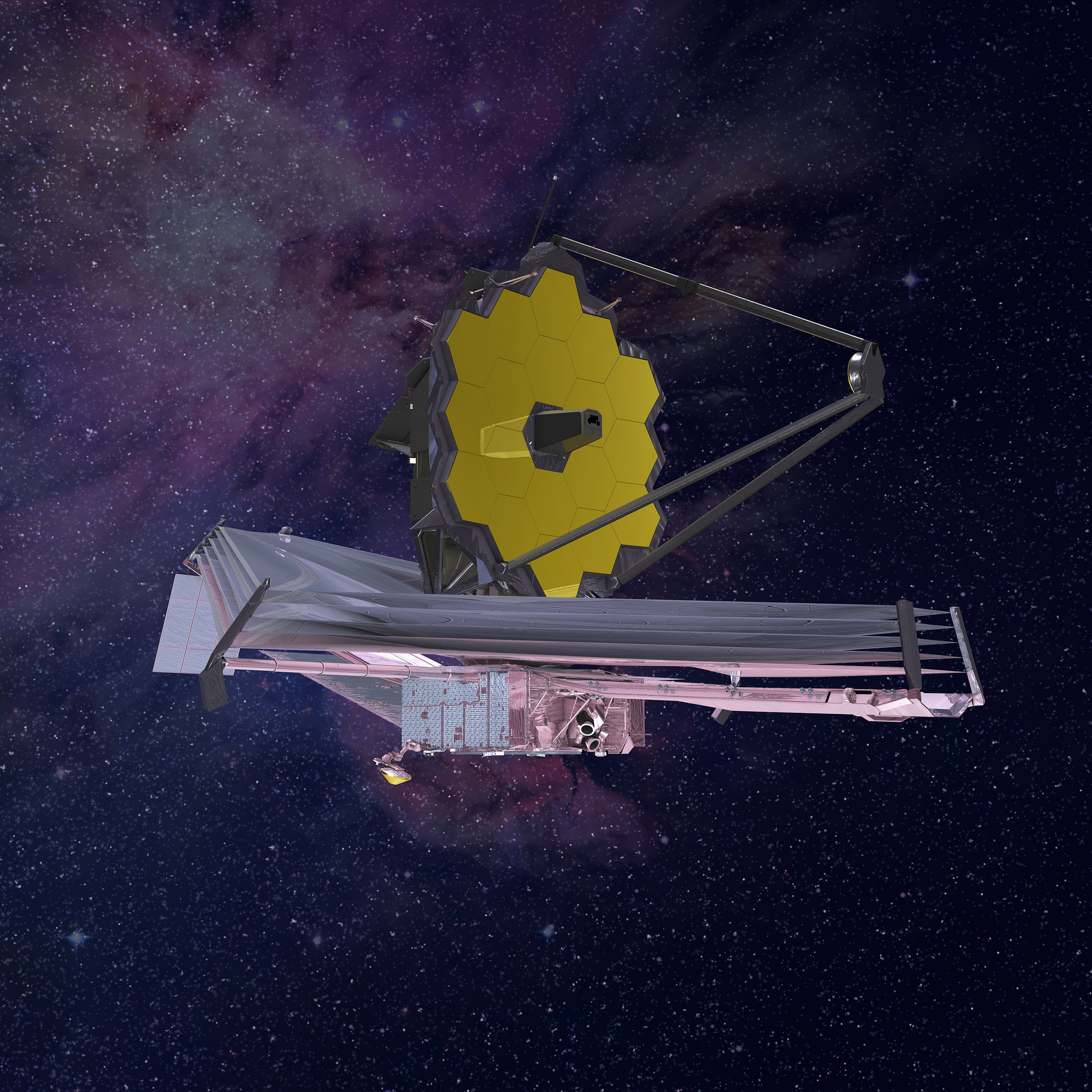What will the James Webb Space Telescope reveal to us about dark matter?

The James Webb Space Telescope could help to solve the pressing mysteries of dark matter.
Dark matter is a mysterious, invisible form of matter that is thought to make up about 27% of the known universe, outweighing visible matter about six to one. Still, despite making up a considerable chunk of the universe, it has eluded our understanding since its existence was first suggested in 1933 by Fritz Zwicky, a Swiss-American astronomer. To date, dark matter has never been directly detected.
While the James Webb Space Telescope cannot directly "see" dark matter, scientists think that by measuring the effects it has on its surrounding, Webb could answer some major questions about dark matter. This, in turn, would greatly advance our knowledge of the universe at large.
Live updates: NASA's James Webb Space Telescope launch
Related: How the James Webb Space Telescope works in pictures
Scientists don't know exactly what dark matter is made of, and they are still working out a way to detect it directly. Currently, scientists are developing such methods with experiments at the Large Hadron Collider (LHC) at CERN, the European Organization for Nuclear Research. Unlike these experiments, Webb won't be able to detect dark matter directly, but it can study its effects on normal, visible matter.
"When you observe dark matter, you have to sort of always go in a roundabout way because you can't see it. But Webb does have the capability to try and get at that in new, orthogonal ways, looking at the dynamics of galaxies," Klaus Pontoppidan, a project scientist at the Space Telescope Science Institute, told Space.com in a news conference in May.
For example, as a "roundabout" method of detecting dark matter, astronomers can use existing technologies to measure how much mass is in stars and galaxies. Some of the main evidence for the existence of dark matter is that many galaxies could not exist and move as they do without a large amount of invisible mass.
Get the Space.com Newsletter
Breaking space news, the latest updates on rocket launches, skywatching events and more!
To help astronomers more precisely locate that dark matter, Webb will take extremely sharp images in which researchers will be able to observe disturbances caused by gravitational lensing, pointing them to where the invisible mass is lurking. Gravitational lensing is a phenomenon described by Einstein's general theory of relativity. With this phenomenon, when a light beam passes a large mass, it will be slightly deflected as the fabric of spacetime is slightly curved by the mass.
Image Gallery: Dark matter across the universe
In imaging distant galaxies, Webb can find these masses and determine what's "missing," or not observable, which would then likely be dark matter. "Webb will be particularly well-suited for this type of measurement, because its very sharp images will allow very small disturbances to be measured, and because it can see so deep into space, giving it access to many more background galaxies to measure disturbances caused by this gravitational lensing effect," according to a NASA fact sheet about Webb.
"Also, Webb will observe many statistics of galaxy evolution," the fact sheet adds, "and scientists can compare these observations to theories of the role that dark matter played in that process, leading to some understanding of the amount and nature of the dark matter in galaxies."
Webb is designed to see farther into space than we've ever seen before, which will also allow it to see farther back in time. By making these observations so deep into space, Webb will be able to study the early beginnings of the universe and its galaxies, and the role that dark matter may have played in their evolution.
Scientists continue to work to understand when the universe's early galaxies formed, Pontoppidan said. The processes involved in this formation are "driven by dark matter evolution models, putting different parameters on the first galaxies at different times."
Pontoppidan added that Webb can be used to measure some of the basic parameters of those first galaxies in the universe and allow us to understand their luminosity, mass distribution and much more.
Webb is set to launch on Dec. 24, 2021 atop an Arianespace Ariane 5 rocket from Europe's Spaceport in Kourou, French Guiana.
Email Chelsea Gohd at cgohd@space.com or follow her on Twitter @chelsea_gohd. Follow us on Twitter @Spacedotcom and on Facebook.
Join our Space Forums to keep talking space on the latest missions, night sky and more! And if you have a news tip, correction or comment, let us know at: community@space.com.

Chelsea “Foxanne” Gohd joined Space.com in 2018 and is now a Senior Writer, writing about everything from climate change to planetary science and human spaceflight in both articles and on-camera in videos. With a degree in Public Health and biological sciences, Chelsea has written and worked for institutions including the American Museum of Natural History, Scientific American, Discover Magazine Blog, Astronomy Magazine and Live Science. When not writing, editing or filming something space-y, Chelsea "Foxanne" Gohd is writing music and performing as Foxanne, even launching a song to space in 2021 with Inspiration4. You can follow her on Twitter @chelsea_gohd and @foxannemusic.









